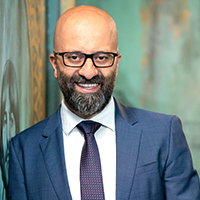Whether it’s a quick checkup or a long term treatment, every patient comes to your door looking for more than simply medical expertise — they’re seeking a positive and supportive experience through what can be a challenging and confusing time. They want someone whom they can trust, therefore excellent patient care extends far beyond the consultation room.
When patients are satisfied, there are innumerable benefits for practices and patients alike. Satisfied patients are “more adherent to physician recommendations and more loyal to physicians”, which allows for a stronger practitioner and patient relationship.
Though factors such as age and socioeconomic status will always influence patient perceptions, there are many actionable ways that practices can harness patient feedback for positive change. Collecting patient feedback is the essential starting point.
If you’re wondering how collecting patient feedback can improve healthcare delivery, we’ve compiled some essential tips. From where to begin, to the essentials of a satisfaction survey, small steps promise positive changes for your practice.
Where to begin
For many industries, “gathering, interpreting and responding to both solicited and unsolicited online consumer feedback is routine practice and often seen as the key to success” — health is no different.
Pursuing a patient centric approach to practice growth will equip your team to “enhance strategic decision making, reduce no shows and unnecessary costs, meet patients' expectations, frame strategies for effective management, monitor healthcare performance of health plans” and more.
Talking to your staff
An often overlooked method of collecting patient feedback is speaking with reception staff. They’re the ones pioneering a positive first experience in your practice — through offering a smile, a helpful presence in the waiting room and a go to source for all administrative questions.
Talking to your staff will enable you to quickly gauge perceptions of your practice. Consider asking your staff:
- What are their most time intensive tasks?
- How often do patients ask to see the specialist?
- How often do patients express frustration at the length of waiting?
- On average, how long does it take to process a patient’s payment?
These simple questions are a starting point for discussion. Processes of communicating feedback between support staff, specialists and patients are essential.
Talking to your patients
Of course, the patient satisfaction survey is the most effective means of collecting patient feedback. Whether it’s via a dedicated patient communication portal or a follow up email after an appointment, opening up means of communication is helpful for building a patient centric approach.
The essentials of a patient satisfaction survey
An effective patient satisfaction survey needs to strike a balance between brevity and breadth of questions. Aim to keep your surveys fewer than 10 questions that cover a thorough scope of your practice. Essential topics include:
Interpersonal interactions
What was your first impression as you walked in? What was helpful or unhelpful?
Positive interactions between patients and staff make an enormous difference in creating a good patient experience. Interpersonal interactions are about gauging a qualitative measure of how friendly, helpful, rude or genuine your staff appear.
Technical quality
How satisfied are you with your specialist’s diagnosis and treatment?
Patients want to know they’re in safe hands, so it’s crucial to keep track of how they perceive your specialists. Technical quality is about determining how confident they are that your practitioners are providing the best diagnosis and treatment.
Convenience
What was easy or difficult about booking your appointment?
Convenience is always a must, however it may look different depending on whether your patients are young workers with less flexible hours at the office, parents of multiple children or retirees on a pension. Everyone’s busy, so it’s useful to gain a perspective on how simple your patients found: locating your practice, booking or changing an appointment, providing documents, processing a payment, waiting for a specialist and use of facilities.
Financial factors
How easily were you able to organise, compare and complete payment options?
With changes to Medicare, it’s more important than ever to equip your staff for processing financial matters more effectively. Many patients may not have as many funds, so providing options for payment and insurance reimbursements is helpful. Whether it’s leveraging bulk billing solutions or ECLIPSE, allowing for on the spot health care claims, there are many ways your team, equipped with the right technology, can streamline the financial side.
Effective outcomes
How effective was your consultation?
The improvement of health and quality of life is a key factor in shaping a patient’s experience. Effective outcomes aims to determine how patients rate the success of their treatments.
Continuity
How often have you returned to the same specialist?
Though factors such as distance of residence and access to adequate travel infrastructure influences continuity of care, how frequent a patient returns to the same specialist is a reflection of satisfaction. Satisfaction influences patient loyalty.
Physical environment
What's comfortable/uncomfortable in your experience of the a) waiting room b) consultation room?
Every aspect of your practice’s physical environment shapes the patient experience, from the seats in your waiting room to the lighting in your consultant room.
Availability
How easily were you able to find additional information? What resources would you find useful?
Empowering patients with the information to make the best decisions for their health is key to great patient care. Resources, such as pamphlets and website FAQs, are useful to keep around the practice and in waiting rooms. Availability is a measure of the resources available and how easily patients found them.
Additional questions
Do you have any other questions or comments?
Ultimately, a patient centric approach requires opening up a conversation between practice and patient. Ensure you close each survey with an area for patients to voice any additional questions, concern or praise they may have.
Over to you
With so many tasks to do and patients to see, the role of support staff and specialist alike is full of challenges. Identifying areas for opportunity, through improving processes and better delegating workloads, requires a patient centric approach — that all begins with effectively collecting patient feedback.
To help you optimise patient experiences and grow your practice, we’ve created an essential eCourse for championing sustainable growth. Dive into 5 modules on managing the business side, scaling efficiently and avoiding costly disruptions.
Clinic to Cloud does not provide tax, legal or accounting advice. This material is for informational purposes only and is not a substitute for independent professional advice. You should consult your own tax, legal and accounting advisors before engaging in any transaction. See the Clinic to Cloud Disclaimer for further information.




